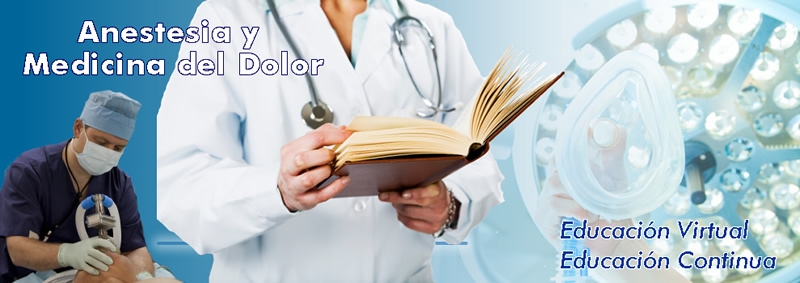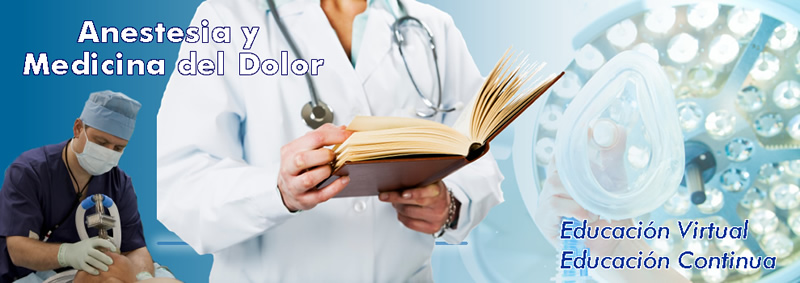|
Revisión sistemática sobre melatonina perioperatoria
A systematic review of peri-operative melatonin.
Anaesthesia. 2014 Oct;69(10):1163-71. doi: 10.1111/anae.12717. Epub 2014 May 19.
Abstract
We systematically reviewed randomised controlled trials of peri-operative melatonin. We included 24 studies of 1794 participants that reported eight peri-operative outcomes: anxiety; analgesia; sleep quality; oxidative stress; emergence behaviour; anaesthetic requirements; steal induction; and safety. Compared with placebo, melatonin reduced the standardised mean difference (95% CI) pre-operative anxiety score by 0.88 (0.44-1.33) and postoperative pain score by 1.06 (0.23-1.88). The magnitude of effect was unreliable due to substantial statistical heterogeneity, with I(2) 87% and 94%, respectively. Qualitative reviews suggested the melatonin improved sleep quality and emergence behaviour, and might be capable of reducing oxidative stress and anaesthetic requirements.
|
Evaluación de la eficacia analgésica de la melatonina en pacientes sometidas a cesárea bajo anestesia espinal: un estudio prospectivo aleatorizado doble ciego.
Evaluation of the Analgesic Efficacy of Melatonin in Patients Undergoing Cesarean Section Under Spinal Anesthesia: A Prospective Randomized Double-blind Study.
Abstract
Melatonin has been suggested as a new natural pain killer in inflammatory pain and during surgical procedures. We designed this randomized double-blind controlled study to evaluate the analgesic efficacy and also optimal preemptive dose of melatonin in patients undergoing cesarean section under spinal anesthesia . One hundred twenty patients scheduled for cesarean section under spinal anesthesiawere randomly allocated to one of three groups of 40 each to receive melatonin 3 milligram (mg) (group M3), melatonin 6 mg (group M6) or placebo (group P) sublingually 20 min before the spinal anesthesia. The time to first analgesic request, analgesic requirement in the first 24 h after surgery, hemodynamic variables, anxiety scores nd the incidence of adverse events were recorded. The duration of anesthesia and analgesia didn't show significant differences between three groups. Total analgesic request during 24 h after surgery was different among the three groups (P = 0.035). The incidence of headache in group M6 was significantly higher than others (P<0.001). However, after adjusting headache between groups of the study, we were unable to show the significant difference in the total analgesic request during 24 h after surgery among the three groups (p = 0.058). Although premedication of patients with 3 mg sublingual melatonin prolonged time to first analgesic request after cesarean delivery compared to placebo group, the difference was not statistically significant. Meanwhile increasing dose of melatonin to 6 mg failed to enhance analgesia and also increase the incidence of headache in patients undergoing cesarean section under spinal anesthesia.
KEYWORDS: Analgesia; Cesarean section; Melatonin; Spinal anesthesia
|
Concentraciones de melatonina CSF preoperatoria y la aparición de delirium en pacientes con fractura de cadera anterior: un estudio preliminar.
Preoperative CSF Melatonin Concentrations and the Occurrence of Delirium in Older Hip Fracture Patients: A Preliminary Study.
PLoS One. 2016 Dec 9;11(12):e0167621. doi: 10.1371/journal.pone.0167621. eCollection 2016.
Abstract
BACKGROUND: Delirium is characterized by disturbances in circadian rhythm. Melatonin regulates our circadian rhythm. Our aim was to compare preoperative cerebrospinal fluid (CSF) melatonin levels in patients with and without postoperative delirium. METHODS: Prospective cohort study with hip fracture patients ≥ 65 years who were acutely admitted to the hospital for surgical treatment and received spinal anaesthesia. CSF was collected after cannulation, before administering anaesthetics. Melatonin was measured by radioimmunoassay (RIA). Data on delirium was obtained from medical and nursing records. Nurses screened every shift for delirium using the Delirium Observation Screening Scale (DOSS). If the DOSS was ≥3, a psychiatrist was consulted to diagnose possible delirium using the DSM-IV criteria. At admission, demographic data, medical history, and information on functional and cognitive status was obtained. RESULTS: Seventy-six patients met the inclusion criteria. Sixty patients were included in the analysis. Main reasons for exclusion were technical difficulties, insufficient CSF or exogenous melatonin use. Thirteen patients (21.7%) experienced delirium during hospitalisation. Baseline characteristics did not differ between patients with and without postoperative delirium. In patients with and without postoperative delirium melatonin levels were 12.88 pg/ml (SD 6.3) and 11.72 pg/ml (SD 4.5) respectively, p-value 0.47. No differences between patients with and without delirium were found in mean melatonin levels in analyses stratified for cognitive impairment or age.
CONCLUSION: Preoperative CSF melatonin levels did not differ between patients with and without postoperative delirium. This suggests that, if disturbances in melatonin secretion occur, these might occur after surgery due to postoperative inflammation.
|
Efectos analgésicos, ansiolíticos y anestésicos de la melatonina. Novedosos usos potenciales en pediatría
Analgesic, anxiolytic and anaesthetic effects of melatonin: new potential uses in pediatrics.
Abstract
Exogenous melatonin is used in a number of situations, first and foremost in the treatment of sleep disorders and jet leg. However, the hypnotic, antinociceptive, and anticonvulsant properties of melatonin endow this neurohormone with the profile of a drug that modulates effects of anesthetic agents, supporting its potential use at different stages during anesthetic procedures, in both adults and children. In light of these properties, melatonin has been administered to children undergoing diagnostic procedures requiring sedation or general anesthesia, such as magnetic resonance imaging, auditory brainstem response tests and electroencephalogram. Controversial data support the use of melatonin as anxiolytic and antinociceptive agents in pediatric patients undergoing surgery. The aim of this review was to evaluate available evidence relating to efficacy and safety of melatonin as an analgesic and as a sedative agent in children. Melatonin and its analogs may have a role in antinociceptive therapies and as an alternative to midazolam in premedication of adults and children, although its effectiveness is still controversial and available data are clearly incomplete.
PDF |
Congresos Médicos por Especialidades en todo Mundo
Medical Congresses by Specialties around the World
|
Congreso Nacional de Residentes de Anestesiología
7 al 9 de junio, 2018. Lima, Perú
|
Primer Congreso Nacional de Residentes de Anestesiología
Ecuador, Agosto 2018
|
Safe Anaesthesia Worldwide
Delivering safe anaesthesia to the world's poorest people
|
|
|
|  |
|







